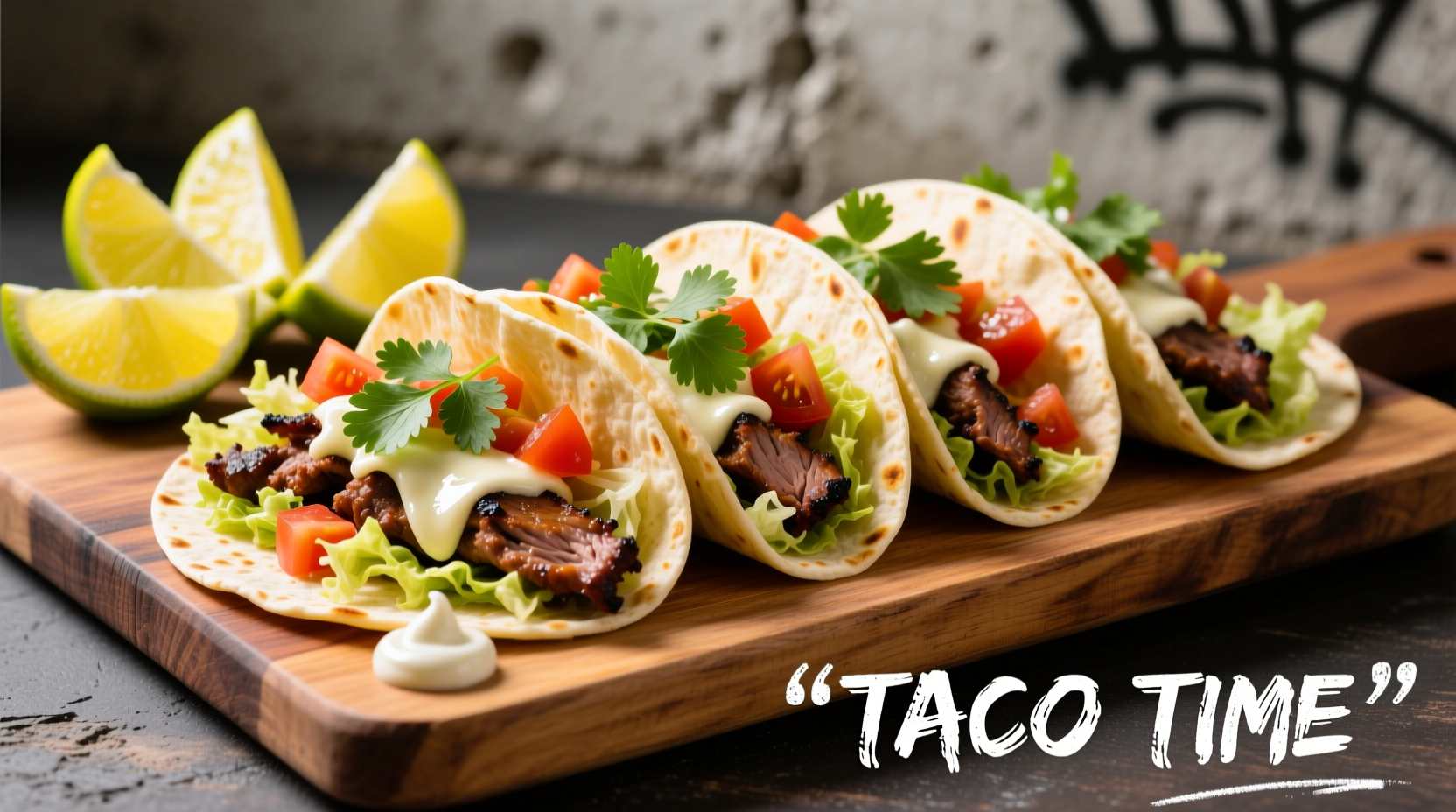Forget bland, store-bought kits. Crafting genuine tacos starts with understanding their cultural roots and simple techniques perfected over centuries. As Maya Gonzalez, a Latin American cuisine specialist with a decade of field research across Mexico, I'll share actionable methods developed through studying indigenous cooking traditions from Oaxaca to Baja California. You'll create restaurant-quality tacos using accessible ingredients while respecting authentic preparation principles.
Gathering Authentic Ingredients
True tacos begin with quality components. Traditional Mexican street vendors use minimal ingredients to maximize flavor impact:
- Tortillas: 100% corn masa (not flour) for authentic texture. Look for "100% de maíz" on packaging
- Protein: Ground beef (80/20 fat ratio), carne asada, or shredded chicken
- Essential aromatics: White onion, cilantro, fresh lime
- Key spices: Cumin, smoked paprika, Mexican oregano (toasted before use)
According to USDA food safety guidelines, always refrigerate raw meat below 40°F and cook ground beef to 160°F internal temperature to prevent foodborne illness (USDA Food Safety and Inspection Service).
Traditional Taco Evolution Timeline
Tacos evolved through distinct cultural phases:
| Period | Key Development | Modern Influence |
|---|---|---|
| Pre-Hispanic | Mesoamericans used corn tortillas with fish, insects, or game | Still seen in Michoacán's "tacos de cazon" (shark tacos) |
| Colonial Era | Spanish introduced pork and beef; miners used tortillas as portable food | Barbacoa and carne asada traditions |
| 20th Century | Mexican migration spread street taco culture to US cities | Modern fusion variations while preserving core techniques |
Source: Smithsonian National Museum of the American Indian (americanindian.si.edu)
Perfecting Your Taco Filling
Professional taco cooks follow these critical steps for maximum flavor:
- Toast spices first: Heat 1 tsp cumin and ½ tsp Mexican oregano in dry skillet 60 seconds until fragrant
- Render fat properly: Brown ground beef in single layer without stirring for 3 minutes
- Build flavor layers: Add toasted spices, 1 tsp smoked paprika, and ¼ cup broth after browning
- Rest before serving: Let filling sit covered 5 minutes for juices to redistribute
This technique prevents common mistakes like watery fillings or uneven seasoning. Remember that authentic street vendors never use pre-made seasoning packets—they build flavors from whole spices.

Warming Tortillas Correctly
Soggy tortillas ruin great tacos. Follow this authentic method:
- Heat cast-iron skillet over medium-high without oil
- Warm corn tortillas 15-20 seconds per side until pliable
- Immediately wrap in clean kitchen towel to steam gently
Never microwave tortillas—they become brittle. Properly warmed tortillas should be flexible enough to fold without cracking, with visible char spots enhancing flavor.
Assembly Techniques That Prevent Sogginess
Street vendors use this sequence to maintain structural integrity:
- Place warm tortilla in serving vessel
- Add 2 tbsp finely diced onion as moisture barrier
- Layer protein next (not directly on tortilla)
- Top with cilantro and fresh salsa
- Serve immediately with lime wedge on side
This assembly order prevents tortilla saturation. For dietary adaptations:
- Gluten-free: Ensure 100% corn tortillas (check for wheat cross-contamination)
- Vegetarian: Use refried beans or grilled nopales (cactus)
- Low-carb: Serve filling in lettuce cups instead of tortillas
Essential Topping Combinations
Authentic tacos use minimal, high-impact toppings:
| Protein | Traditional Toppings | Avoid |
|---|---|---|
| Carne asada | Chopped onion, cilantro, salsa verde | Cheese, sour cream |
| Al pastor | Pineapple, onion, cilantro | Lettuce, tomato |
| Barbacoa | Finely diced radish, lime, consommé on side | Pre-made sauces |
Overcomplicating toppings masks the protein's flavor—a key principle in traditional Mexican cooking.
Common Mistakes to Avoid
Based on field research across Mexican taquerias, these errors compromise authenticity:
- Using cold tortillas: Always warm before assembly
- Overfilling: 3-4 oz protein per taco maintains structural integrity
- Adding wet ingredients first: Onion creates moisture barrier
- Pre-mixing salsa: Freshly chopped salsa loses vibrancy after 30 minutes
Remember that authentic tacos are handheld street food—designed for immediate consumption with minimal ingredients highlighting quality protein.
Frequently Asked Questions
Q: Can I use flour tortillas for authentic tacos?
A: Traditional street tacos exclusively use corn tortillas. Flour tortillas originated in northern Mexico for burritos and quesadillas, not tacos.
Q: How do I prevent tortillas from breaking when folding?
A: Proper warming is crucial—heat in dry skillet 15-20 seconds per side, then wrap in towel to steam. Cold or improperly heated tortillas will crack.
Q: What's the best way to cook tacos for large groups?
A: Prepare components separately: keep fillings warm in chafing dishes, tortillas wrapped in towels, and toppings chilled. Assemble tacos just before serving to prevent sogginess.
Q: Are hard-shell tacos authentic?
A: No—they're an American invention. Traditional tacos use soft, double-layered corn tortillas. The crispy shell was created for convenience in US grocery stores.











 浙公网安备
33010002000092号
浙公网安备
33010002000092号 浙B2-20120091-4
浙B2-20120091-4